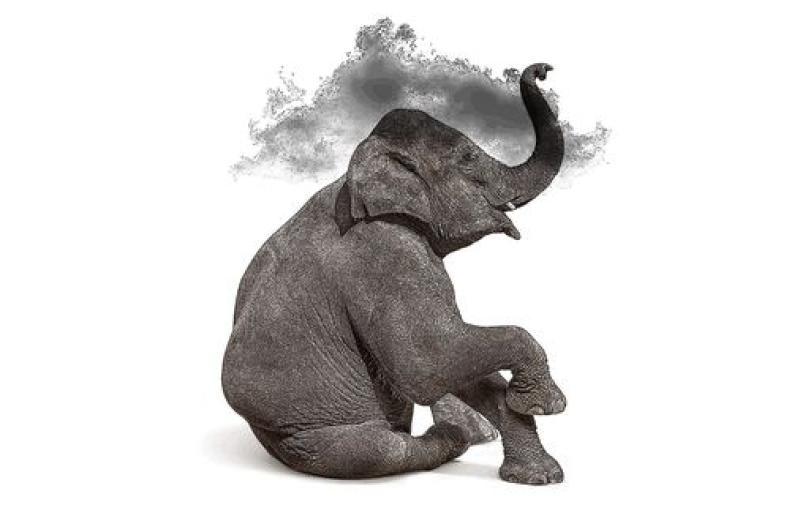The Republicans' demographic trap - The Boston Globe
Category: News & Politics
Via: jbb • 5 years ago • 7 commentsBy: Thomas E. Patterson (BostonGlobe. com)



Republicans are sitting on a demographic time bomb of their own making, and it could send them into a tailspin.
By Thomas E. PattersonUpdated July 27, 2020, 4:00 a.m.Email to a FriendShare on FacebookShare on TwitterPrint this ArticleView Comments Lesley Becker/Globe Staff; Adobe Read more in this series
Lesley Becker/Globe Staff; Adobe Read more in this series
Part 1: "The demographic trap"
Part 2: "The ideological trap"
Part 3: "The media trap
Part 4: "The money trap"
Part 5: "The moral trap"
Republicans were in office and were widely blamed when the Great Depression struck in 1929. The Grand Old Party lost the next three presidential elections by wide margins. But it was a related development during the period that ruined the GOP's long-term prospects. First-time voters backed the Democratic Party by nearly 2 to 1 and stayed loyal to it. Election after election until the late 1960s, their votes carried the Democrats to victory.
In only one period since then have young voters sided heavily with one party in a series of elections. Voters under 30 have backed the Democratic presidential nominee by a 3-to-2 margin over the past four contests. And as they've aged, these voters have leaned more heavily Democratic while also turning out to vote in higher numbers. They now include everyone between the ages of 21 and 45 — more than 40 percent of the nation's adults.
Republicans are sitting on a demographic time bomb of their own making, and it could send them into a tailspin. Although the politics of division that Republicans have pursued since Richard Nixon launched his "Southern strategy" in the late 1960s — a blueprint to shore up the vote of white Southerners by appealing to racial bias — has brought new groups into their ranks, including conservative Southerners, evangelical Christians, and working-class whites, it has antagonized other groups.
Republicans are paying a stiff price for defaming immigrants. If they hadn't, they could have made inroads with the Latinx population. Although most Latinx have conservative views on issues like abortion and national security, they vote more than 2 to 1 Democratic. A 2019 poll found that 51 percent of Latinx believe that the GOP is "hostile" toward them, with an additional 29 percent believing that the GOP "doesn't care" about them.
 Thomas E. Patterson
Thomas E. Patterson
Asian-Americans have also turned away from the GOP. They are America's fastest-growing ethnic group and have the profile of a Republican bloc. They have the nation's highest average family income and are twice as likely as other Americans to own a small business. As late as the 1992 presidential campaign, they voted 2 to 1 Republican. Today, they vote more than 2 to 1 Democratic.
Without the vote of white evangelical Protestants, the GOP would already be a second-rate party. Eliminate the evangelical vote in the 2016 election and the GOP would have received barely more than 40 percent of the popular vote. Even the GOP's reputation as a "white" party owes to evangelicals. Non-evangelical whites voted Democratic by a 53-47 percent margin in 2016. Moreover, white evangelicals' ability to prop up the GOP is declining. America's fifth wave of religious revival began to wane two decades ago. White evangelicals now constitute a sixth of the population, down from a fourth in the 1990s.
There was no gender gap until the GOP adopted evangelicals' version of family values, including opposition to abortion. Women are now the Democrats' largest voting bloc, and their loyalty has increased, reaching record highs in the 2016 and 2018 elections. And Republicans' embrace of evangelicals' position on gay rights has alienated the LGBTQ community. They are now second only to Black Americans in their Democratic loyalty. The GOP's rigid stance on social issues has also eroded its standing with college-educated voters. Once heavily Republican, most of them now side with the Democratic Party.
 Thomas E. Patterson
Thomas E. Patterson
To assess the threat of demographic change to the GOP, I projected the outcome of future elections based on the US Census Bureau's population change estimates. The Republican Party faces a dim future, as the groups supporting it shrink in size while those opposing it grow in number. By 2032, Democrats would have a 59-to-41 percent edge based solely on population change.
A maxim of two-party politics is that a party needs to be inclusive — a big tent — to be competitive. Whatever the short-term advantage of the GOP's politics of division, it is now facing the fallout. Millions of younger adults, women, Blacks, Latinx, Asian Americans, LGBTQ, and the college-educated will be pulling the Democratic lever for years to come.
Thomas E. Patterson is a professor at the Harvard Kennedy School's Shorenstein Center. This series is adapted from his book " Is the Republican Party Destroying Itself? "



The Black voting bloc has a much, much larger demographic problem than does the Republican Party. Joe Biden received 14.2 million more votes than did Hillary Clinton. Biden's voter support was 1.2 times larger than that of Clinton. That large expansion of support cannot be attributed to Black voter turnout. The 2020 election has diminished the influence of the Black voting bloc in Democratic politics.
Another 'logical' fallacy.
How so?
Well first of all, there is no such thing as 'the Black voting block' and even if there were they couldn't possibly have a ' larger demographic problem' than the GOP.
Just because you have dots, doesn't mean they connect.